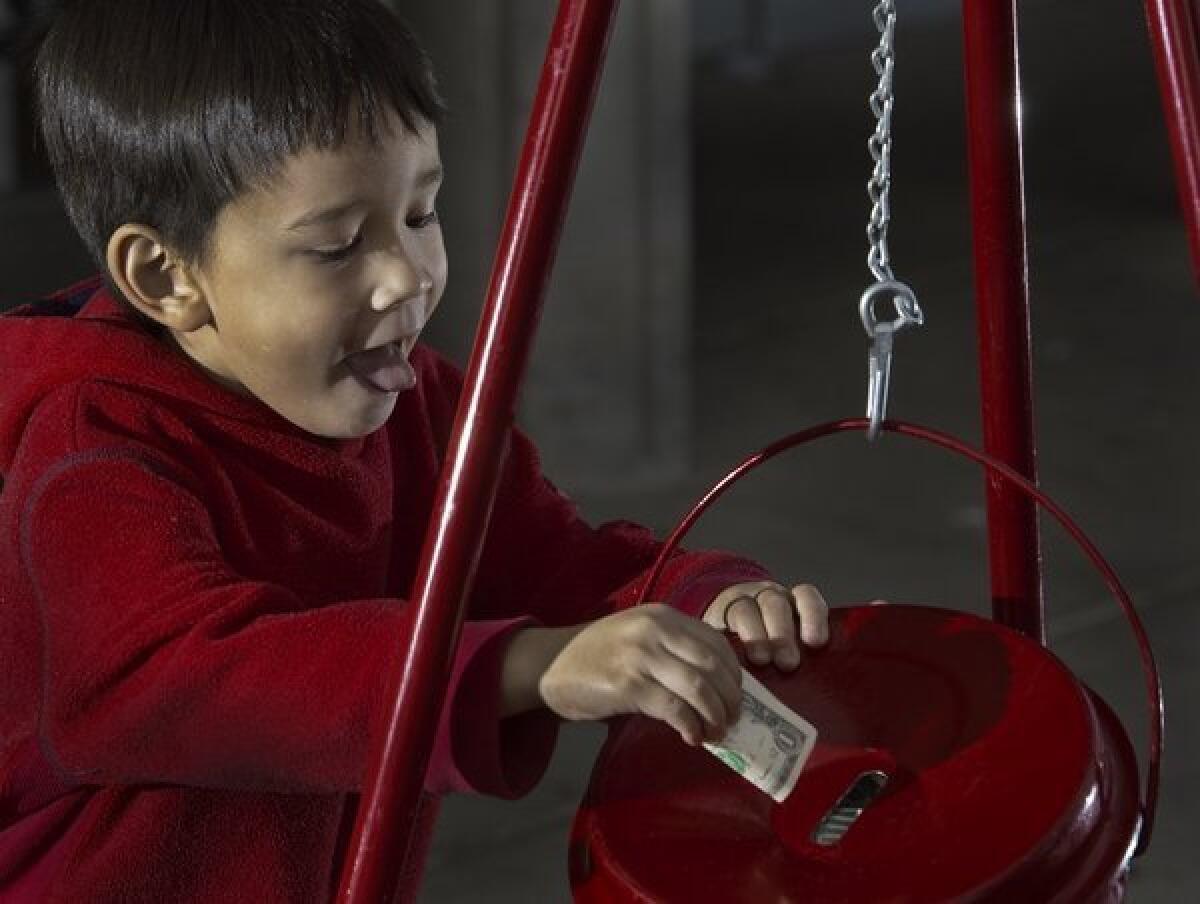Commercial charity fundraisers and the bite they take

- Share via
Charitable donations hit a notable high-water mark in California last year. According to a report released Thursday by the state attorney general’s office, a little more than half of the dollars collected by commercial fundraisers in 2011 actually found its way to the charity that hired them. That’s the first time since the state began reporting these figures in 1997 that less than half of the contributions were lost to fundraiser overhead and profits.
But that’s the average, not the rule, when it comes to commercial fundraisers. In two-thirds of the 859 instances of commercial fundraising listed in the report, charities received less than 50% of the money raised in their names. Twenty-five of those efforts, which raised up to $586,000 supposedly for charity, delivered nothing at all to the organizations that hired them. And in more than 100 cases, the charity was reported to have guaranteed its fundraiser more in fees than was raised in donations.
Maybe that’s why most California charities do their own fundraising rather than hiring someone to do it for them.
Anyway, commercial fundraisers reported collecting $338.5 million in 2011, of which $172.8 million, or 51%, went to charity. The percentage was so much higher than in 2010, charities came out ahead even though total fundraising fell by $24 million from the previous year.
State officials may have hoped that disclosing the sums siphoned off by commercial fundraisers would pressure the industry to cut its administrative costs. That doesn’t appear to be happening. Instead of a steady improvement, the reports since 1997 have shown that the percentage of donations received by charities has fluctuated between a low of 35% (in 2000) and a pre-2011 high of 44% (last year).
The reports also reveal how little charities receive from the thrift stores that sell the donated goods they collect. Stores that bought donated clothes from charities in 2011 and resold them wound up sharing about 16% of their proceeds, which is a little less than the usual percentage. And those that sold donated goods on a commission or fee basis shared about 6% of their proceeds with their affiliated charities, which is significantly less than the percentage shared 10 to 15 years ago.
The one segment showing real improvement over the last decade and a half has been vehicle sales for charity. Ventures that sold donated vehicles in 2011 gave 53.8% of the proceeds to their affiliated charities, down from 57.8% in 2009 but up from only 20% in 1998.
If your mailbox is anything like mine, it’s being inundated with holiday solicitations from charities near and far. Before you stuff a check into any of those return envelopes, it’s worth taking a minute to look through Table 1 of the attorney general’s report to see if that charity has used commercial fundraisers recently and, if so, how much of the donors’ dollars were lost to fundraiser overhead. It may persuade you to break out a new envelope and send a check to the charity directly.
ALSO:
Adam Levine: Apologize to the Roxy
Republicans, stop the grasping: You’ve won
Obama’s ‘balanced’ approach hits a Democratic wall
Follow Jon Healey on Twitter @jcahealey
More to Read
A cure for the common opinion
Get thought-provoking perspectives with our weekly newsletter.
You may occasionally receive promotional content from the Los Angeles Times.







